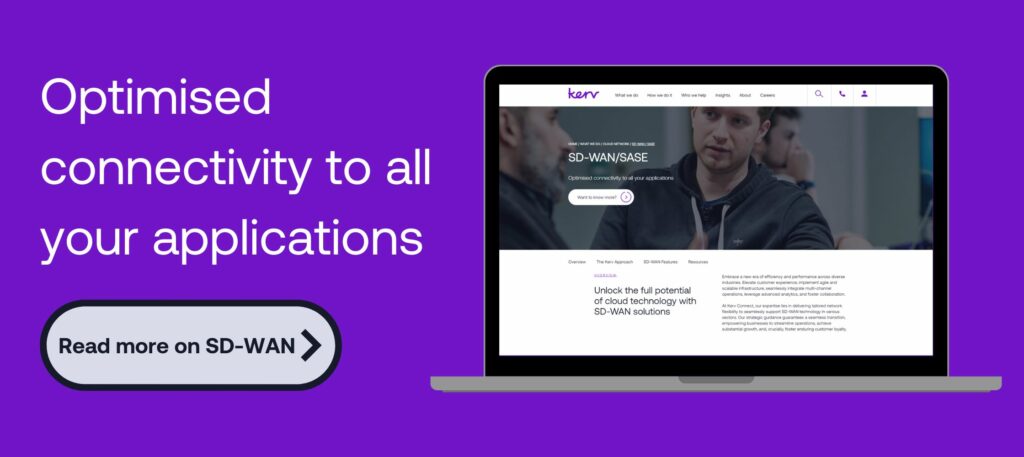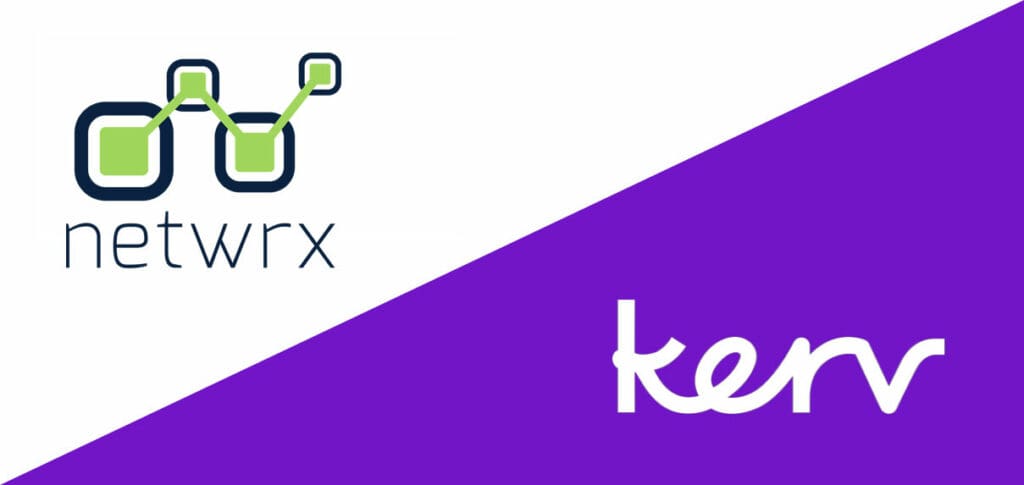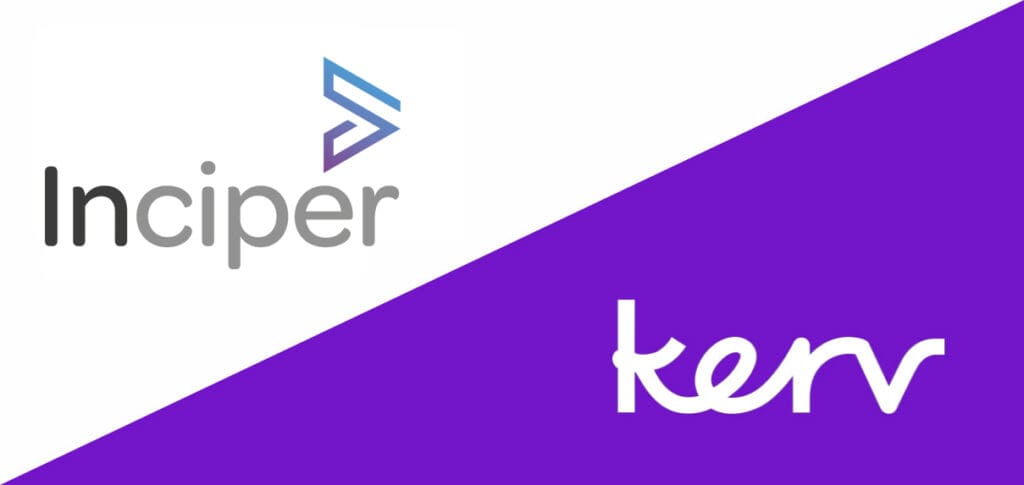
Richard Norman
Chief Technology Officer, Kerv Connect|Kerv
Have a question?
Get in touchPublished 02/11/22 under:
What is SD-WAN?
Wide Area Network or WAN connectivity provides the physical connection between your organisation’s various locations, which allow you to deliver a private network across multiple sites. Traditionally, WAN connections are permanent wired connections provided by a single supplier and contracted over a long period of time. While this sounds simple, managing WAN connections into multiple sites can get complicated fast, particularly if some of your sites are far-flung and need cables installed, or if you need connectivity into locations for shorter periods of time and can’t commit to a multi-year contract.
Enter Software-Defined WAN, or SD-WAN. This approach takes disparate network connections, whether they’re fibre optic, telephone, 5G or satellite connections, and bonds them together into a single WAN.
This approach offers some huge advantages over traditional WAN:
Service Provider Flexibility
One of SD-WAN’s advantages over the traditional Wide Area Network contract is that it abstracts the physical connections from the actual logical provision of the network. The advantage of this is that you’re not tied to a single service provider for every connection, so you can build your WAN by choosing the best connectivity option on a site-by-site basis. If a fibre optic provider in one area offers great connectivity, but doesn’t have connectivity to more remote areas, you can mix and match with a telephone or 5g provider instead.
Theoretically, every site could have its own service provider. While this does mean managing multiple suppliers, the pros really do outweigh the cons in that you can access the best connectivity medium in any given geographical region.
Greater Network Resilience
Another benefit of SD-WAN is that it allows you to add a lot more resilience within your network. As well as having connections from different service providers from site to site, you could also take multiple connections from different service providers for a single site. This means that if a service provider has an issue and you lose connectivity, you have a backup connection and your site is protected.
With traditional WAN, the only way to achieve this would be to run two entirely separate networks, which is extremely expensive and cumbersome, but with SD-WAN, it’s easy to ensure your sites have fallback options in place if connectivity is not as reliable as you need it to be.
Efficient Global Connections
SD-WAN really comes into its own on a global level, when you need to provide connectivity to sites in destinations around the world. With WAN, you’re reliant on the contracted relationships your chosen service provider has in the region you want to work in, as well as the inflated costs they’re paying to rent that connection on your behalf, and the additional margin they’re adding to provide you with the enhanced service. Add in the fact that sometimes the regional provider could also be daisy-chaining in further subcontracted companies, and costs can start to escalate very quickly.
With SD-WAN, you can engage directly with the local service provider of your choice in a given region and incorporate them into your network, cutting out the middle man and significantly reducing the cost of your international connections.
Fast Connection with Rapid WAN
Setting up WAN connections to new building scan take months or even years, leaving your organisation sat waiting before sites can be connected. The process of managing new cable installations can be an absolute nightmare, and lack of connectivity can cause significant headaches for network managers and teams alike.
Enter Rapid WAN. A software-defined wide area network is delivered via a physical box with connections to multiple mobile network connections. By providing access to signals from all the major networks in your region, Rapid WAN is able to offer much more reliable connectivity than a single 5G connection, so you can get your site up and running quickly, minimising downtime while you’re waiting for cables to be installed.
Rapid WAN is also a great choice for temporary sites where installing a permanent connection wouldn’t be cost-effective, as well as a useful backup option for areas where connections are unreliable.
Optimising your SD-WAN provision
SD-WAN has a huge number of positives over a traditional approach, offering greater flexibility and the potential for significant cost savings. However, as with most things, getting the most out of SD-WAN takes careful planning and optimisation. At Kerv Connect, we work closely with our clients to understand their environment, how things are working right now, how that compares to industry norms, and where there could be room for improvement.
It’s important to understand that with networking provision, more does not always mean better. Clients experiencing wi-fi issues are often pushed to add more access points, when in fact adding more signal interference could compound the problem and make things even worse.
Bandwidth provision is another topic that comes up regularly. Selling faster connections is unsurprisingly an objective for service providers, and as a result customers have been led to believe that more bandwidth is the key to better application performance. This isn’t always the case, and in fact we find that the majority of customers already have far more bandwidth then they’re ever realistically going to need, and that application performance issues are the result of other problems in their architecture.
Unlock the Freedom to Choose with Kerv SD-WAN
The flexibility offered by SD-WAN offers the freedom to create the network your organisation needs, but there is some inherent complexity in that you will need to manage multiple suppliers.
That’s where Kerv Connect comes in. We’re experienced in helping our clients streamline the process of blending multiple connections into a single seamless network, giving them the equivalent of a ‘single experience’ with all the benefits that flexibility brings.
Because we’re not tied to any one vendor, set of products, footprint or capability, we aim to provision the post appropriate connection within the SD-WAN networks we manage. We’re also committed to avoiding a “more is better” ethos. Instead we seek to right-size our clients’ network infrastructure so it’s fit for purpose, then work on configuration to ensure it performs as it should.
To find out more about how Kerv Connect can help you optimise costs with a tailor-made SD-WAN solution, get in touch today.
Have a question?
"*" indicates required fields







